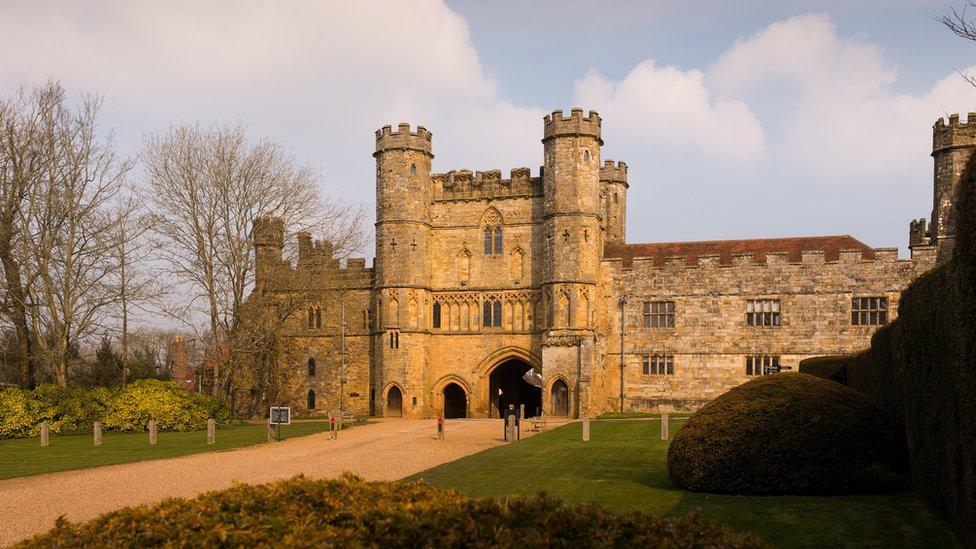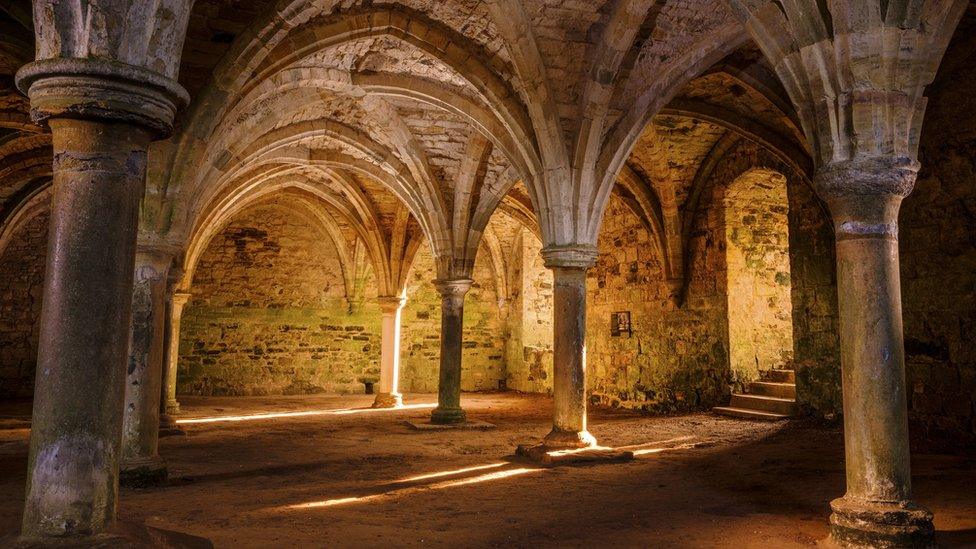'Part of Santa Claus's finger' was given to Battle Abbey
- Published

Pieces of Christ's manger and part of Santa Claus's finger were among objects given to an English abbey, according to a medieval manuscript.
A 580-year-old document details relics said to have been given to Battle Abbey, in East Sussex, by William the Conqueror and King John.
The inventory is one of about 30 such medieval documents.
English Heritage historian Michael Carter has now translated the manuscript.
Hair shirt
Dr Carter said: "The collecting and cherishing of relics was an important aspect of medieval monasticism and I am thrilled to think that I could have been the first person in over 500 years to study the glorious list from Battle Abbey in detail.
"There's no greater endorsement than a king giving a gift of relics so this list reveals just how significant a place Battle Abbey was."

Expert study of the 580-year-old manuscript details relics stored at Battle Abbey

Treasures including pieces of Christ's manger were gifted to the abbey by William the Conqueror and King John
Dr Carter said William the Conqueror gave more to Battle Abbey than any other abbey, "illustrating just how important the site of his victory at the Battle of Hastings remained".
Relics claimed to be from the manger, and a hair shirt and a finger bone, said to be from Saint Nicholas, are among items housed at the abbey.
William the Conqueror was also said to have donated relics of several of the children killed on the orders of King Herod, the transcribed manuscript says.
Gifts given by King John when he visited the abbey in 1200, including relics from Christ's tomb and the cross on which he was crucified, are listed in the manuscript.
The inventory also mentions stones used to kill St Stephen, whose feast day is on 26 December, as among the relics given to the abbey.